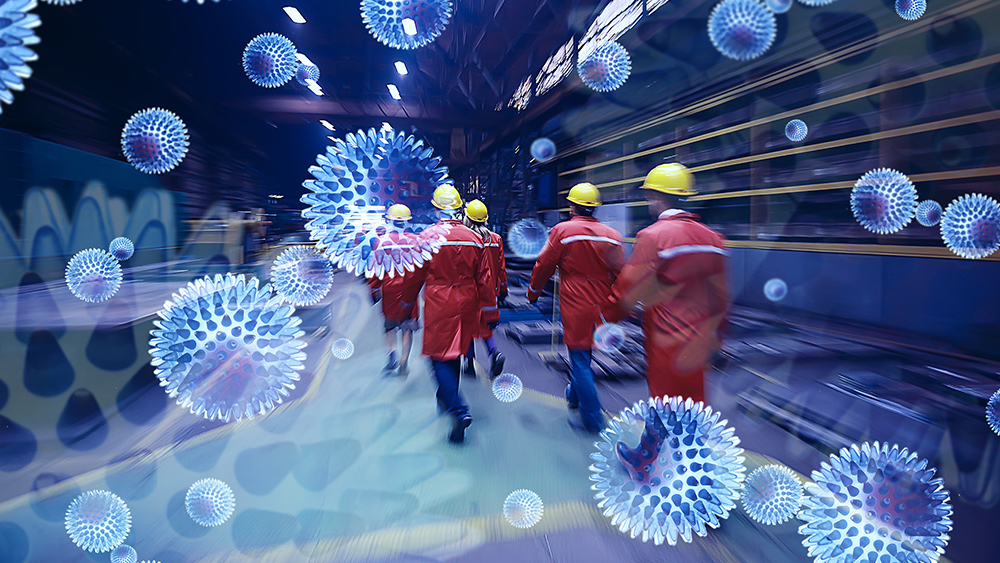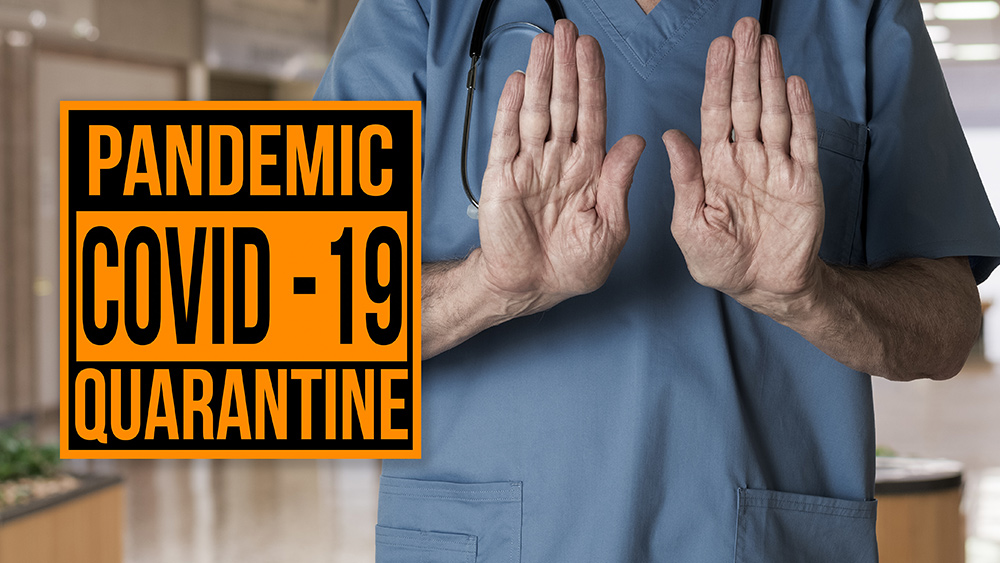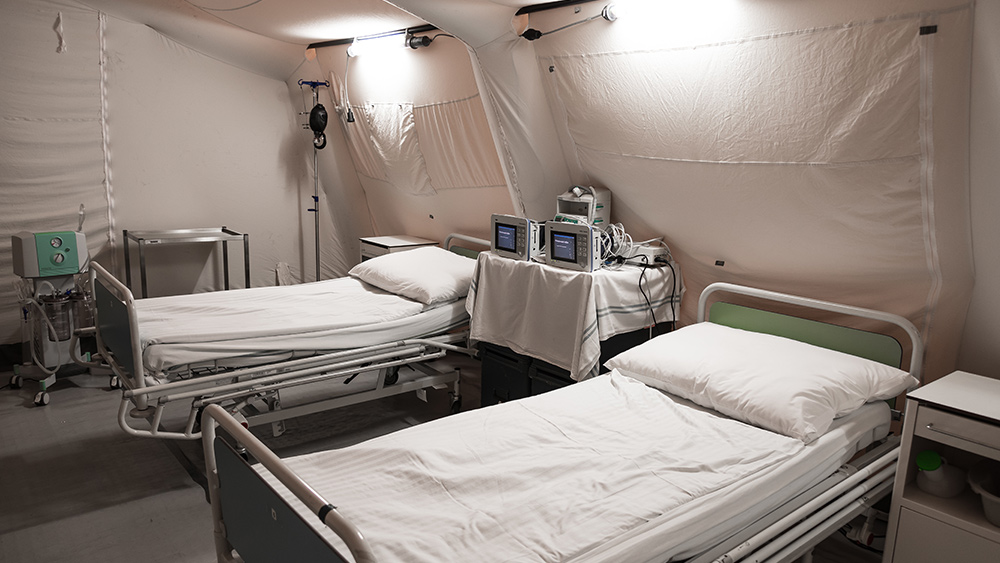Many indoor ventilation systems INCREASE the risk of coronavirus infections
10/06/2020 / By Franz Walker

Modern indoor ventilation systems, which are designed to keep temperatures comfortable and increase energy efficiency, may actually increase the risk of getting infected with the Wuhan coronavirus (COVID-19). This is according to a new study by researchers at the University of Cambridge in the United Kingdom.
According to the researchers, whose findings were published in the Journal of Fluid Mechanics, widely used “mixing ventilation systems” that help keep conditions uniform in all parts of a room, also disperse airborne contaminants – including droplets containing viral particles – evenly throughout the space.
The study highlights the importance of good ventilation and mask-wearing in mitigating the risk of transmission of the coronavirus. The former, in particular, becomes more important as winter approaches and more people stay indoors.
“As winter approaches in the northern hemisphere and people start spending more time inside, understanding the role of ventilation is critical to estimating the risk of contracting the virus and helping slow its spread,” said research lead Paul Linden from Cambridge’s Department of Applied Mathematics and Theoretical Physics (DAMTP).
Some ventilation systems can spread COVID-19 more easily
Ventilation systems in buildings employ one of two air distribution methods: mixing ventilation and displacement ventilation. Of the two, mixing ventilation is more common and makes use of vents that are placed to keep the air in a space well-mixed so that the temperature is kept uniform throughout the space.
A side effect of this mixing is that contaminant concentration is also kept uniform throughout the space. This means that when virus-laden droplets get indoors, they are bound to be quickly spread throughout the room.
In comparison, displacement ventilation uses vents placed at the top and bottom of a room to create a warmer upper zone and a cooler lower zone, with warm air extracted through the top part of the room. As exhaled breath is warm, most of it accumulates in the upper zone. If the interface between zones is high enough, contaminated air gets extracted by the system instead of breathed in by a person.
According to the study, this means that displacement ventilation systems, when designed properly, can reduce the risk of mixing and cross-contamination of breath, which reduces the risk of exposure to pathogens such as the coronavirus.
Currently, the World Health Organization (WHO) has issued guidelines on ventilation in public spaces. These guidelines, however, have yet to take into consideration the effects of the type of ventilation in use. Instead, they’re focused on increasing airflow and filtration. This new study, however, could change that.
How air moves in a room affects risk of coronavirus transmission
Improving construction standards have resulted in buildings that are more airtight and more comfortable for occupants. As a result, in recent years, ventilation system designers have primarily been focused on reducing indoor air pollution levels. (Related: Good for the environment, bad for your health? Underground transit systems offer poor ventilation, increasing concentration of cancer-causing agents in the air.)
“These two concerns are related, but different, and there is tension between them, which has been highlighted during the pandemic,” said DAMTP’s Dr. Rajesh Bhagat. “[Maximizing] ventilation, while at the same time keeping temperatures at a comfortable level without excessive energy consumption is a difficult balance to strike.”
With this in mind, the Cambridge researchers looked at their earlier work on ventilation efficiency and reinterpreted their data for air quality. Their purpose was to determine the effects of ventilation on the distribution of airborne contaminants in a given space. They also looked at where the breath exhaled by a person – both with and without a mask – ends up in a given space.
“In order to model how the coronavirus or similar viruses spread indoors, you need to know where people’s breath goes when they exhale, and how that changes depending on ventilation,” said Linden. “Using these data, we can estimate the risk of catching the virus while indoors.”
“You can see the change in temperature and density when someone breathes out warm air — it refracts the light and you can measure it,” added Bhagat. “When sitting still, humans give off heat, and since hot air rises, when you exhale, the breath rises and accumulates near the ceiling.”
Based on their observations, the researchers noted that the flow of air and exhaled breath inside a room is turbulent and can change dramatically depending on the movements of the occupants, the type of ventilation and even the opening and closing of doors and windows.
In addition to these factors, the researchers found that certain actions – particularly laughing – create larger air disturbances. This suggests that if an infected person without a mask laughs indoors, it would greatly increase the risk of coronavirus transmission to the other people in the room.
For the latest research on the ongoing pandemic, visit Pandemic.news.
Sources include:
Submit a correction >>
Tagged Under:
air filters, airborne contaminants, coronavirus, covid-19, indoor air, infections, infectious disease, outbreak, pandemic, research, superbugs, ventilation, viral infections, virus transmission
This article may contain statements that reflect the opinion of the author
RECENT NEWS & ARTICLES
Infections.News is a fact-based public education website published by Infections News Features, LLC.
All content copyright © 2018 by Infections News Features, LLC.
Contact Us with Tips or Corrections
All trademarks, registered trademarks and servicemarks mentioned on this site are the property of their respective owners.





















